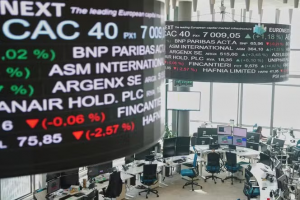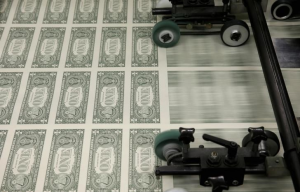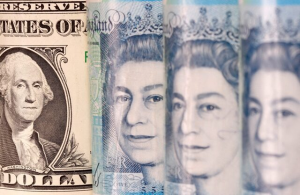The movements of the US dollar stabilized today, Wednesday, as investors await the results of the Federal Reserve meeting to determine monetary policy. This meeting comes amid a backdrop of global economic uncertainty and continued selling of US assets by some major investors in Asia.
Dollar Performance:
The dollar index saw relative stability today after a slight decline of 0.2% in the previous session, marking the third consecutive decline.
It appears that there has been some slowdown in the pace of dollar selling witnessed last week, which was driven by global investors offloading the US currency, particularly in emerging markets, or repatriating funds to their home countries.
Conversely, some major currencies fell against the dollar today. The euro declined by 0.2% to reach $1.1338, giving back part of the gains it made after the election of Friedrich Merz as chancellor of Germany.
The Japanese yen also fell by 0.4%, ending a three-day streak of gains after Japanese markets resumed trading following a holiday.
Factors Affecting the Dollar:
Investors are closely watching the Fed meeting today, where it is widely expected that interest rates will remain unchanged. However, attention is focused on statements from Federal Chairman Jerome Powell, seeking clues about the future direction of monetary policy.
Traders are currently betting on the resumption of monetary easing by July, but some economists are skeptical due to persistent inflationary pressures.
Additionally, news about trade talks between US and Chinese officials in Switzerland scheduled for next Saturday has eased some concerns about the trade war. President Trump also suggested on Sunday the possibility of announcing some trade agreements this week, providing a positive boost to market sentiment.
In terms of other currencies, Asian currencies experienced notable fluctuations. The Taiwanese dollar saw a significant rise, leading to gains in other currencies in the region such as the Korean won and the Singapore dollar. However, the Taiwanese dollar declined by 0.7% today, while the Korean won also fell after rising at the beginning of trading.
In contrast, the Chinese yuan decreased after the People's Bank of China announced an unexpected cut in interest rates and a reduction in banks' reserve holdings to support the economy amid trade tensions.
Some major investors in Asia will continue to sell US assets, putting pressure on the dollar. George Saravelos from Deutsche Bank described the sharp rise in the Taiwan dollar as a “warning shot” regarding these flows.













